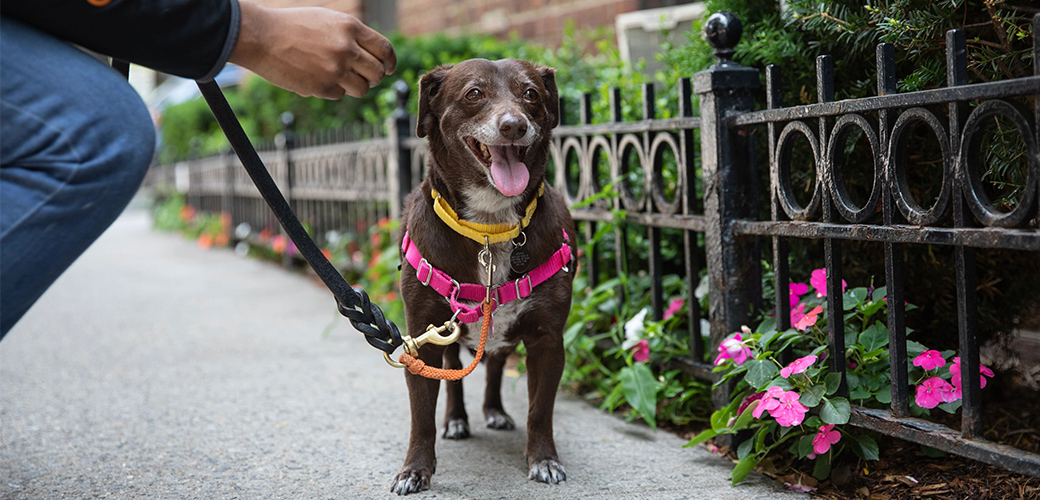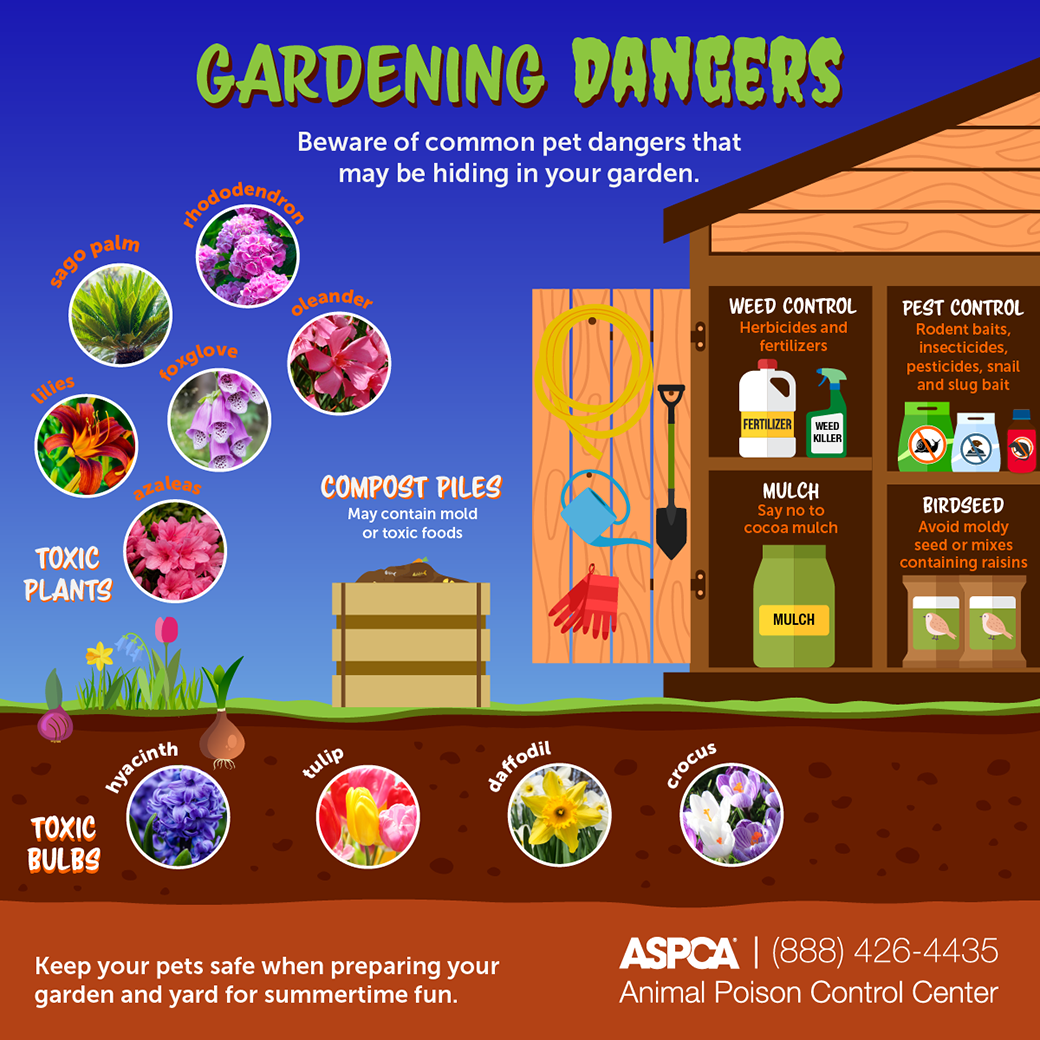How to Curate Your Garden to Support Local Wildlife While Keeping Your Pets Safe
May 2, 2024

You don’t need to live in a forest or next to the ocean to enjoy a landscape jam-packed with critters of all kinds. Species of insects, birds and mammals will come to wherever you are if you support the ecosystem surrounding you. Yes, even urban areas! Plants, specifically native plants, are one of the foundational pillars for having a healthy ecosystem. If you grow the plants, the wildlife will come to you!
Now that summer is just around the corner, there’s never been a better time to stretch your green thumb! But before you dive in, it’s important to note that some gardening supplies and plants can pose a major threat to our four-legged friends. That’s why our experts at the ASPCA Animal Poison Control Center (APCC) have some tips to not only keep your pets safe, but to keep your backyard ecosystem thriving, too!
How do I know which plants are native to my area?
See the below list for suggestions on beautiful native plants that are pet-safe and found in many areas of the United States. Or, consider checking out the National Wildlife Federation or the National Audubon Society for a more comprehensive list based on your specific location. You can also check out your local plant nurseries as they may have a native plants section. You’ll want to look for the species and variety of the selected plant that is native to your area in order to attract the most wildlife.
Use these plants to provide attractive food and a habitat for beneficial insects including bees, butterflies, hummingbirds and even songbirds who will eat off the seedheads in winter. In addition, many of these plants provide excellent habitat for insects, spiders, frogs and small mammals.
Plants that are non-toxic to dogs and cats:
- Aster (Aster spp.)
- Grasses (varies)
- Joe-Pye (Eutrochium spp.)
- Sunflower (Helianthus spp.)
- Sage (Salvia spp.)
What else should I consider when selecting pet-safe plants for my garden?
- Use a variety of plants, like those varying in height, to create as many microhabitats as possible.
- Avoid toxic plants such as sago palms, azaleas, rhododendrons, oleanders, foxglove or lilies. Though these plants may be appealing to the eye, they can be toxic if ingested by pets. Sago palms can cause significant gastrointestinal distress and liver failure, while azaleas and rhododendrons can cause neurologic signs, and changes to heart rate and rhythm. Oleander and foxglove can also cause significant changes to heart rhythm, and lilies can cause kidney failure in cats.
- Be wary if planting bulbs, such as daffodil, tulip, hyacinth or crocus. If your pet ingests the bulbs of these plants, they can cause significant stomach upset, and possibly even an obstruction. Daffodil bulbs can also cause low blood pressure and unsteadiness while walking. While spring crocus may cause mild nausea and vomiting, ingestion of autumn crocus can be very dangerous for your pet with possible effects ranging from severe gastrointestinal distress to changes to heart rate and rhythm, bone marrow suppression and multi-organ failure.
- Consider all four seasons. Many plants such as grasses provide important shelter and nutrition to wildlife during winter.
- Pay attention when using fertilizer. Many fertilizers contain ingredients that are appealing to our pets. If large amounts of fertilizer are ingested, pets can show signs of stomach upset or neurologic signs like weakness and tremors.
- Compost piles are great for your garden, but not for your pets! Several food items that are found in compost piles may be toxic including grapes, coffee grounds, garlic and onions. Some food material can also grow mold, and ingestion of moldy products can lead to signs of stomach upset and neurologic signs like tremors and seizures.
- Pick an alternative to cocoa mulch. Like the name implies, cocoa mulch smells and tastes like chocolate, making it appealing to pets. If enough cocoa mulch is ingested, pets can develop signs ranging from stomach upset to changes to heart rate and rhythm, hyperactivity and seizures.
- Use discretion when picking birdseed. Many of these products may contain raisins, which can cause kidney damage in dogs. Birdseed can also mold easily, and cause significant stomach upset if ingested.
- Be patient. Some plants may take several years to mature and thrive in their ecosystem.
- If you do choose to use pest control substances, use caution. While everyone wants their garden to flourish, some of the products used to keep pests away can be harmful to your pets. If ingested, rodenticides can be life-threatening if not treated appropriately. Symptoms can include neurologic signs to kidney damage or internal bleeding. While most appropriately applied and dried herbicides and insecticides will only cause mild vomiting, exposure to concentrated or undiluted products could cause more significant effects, such as seizures, low blood pressure or breathing problems. Other baits, like for slugs or snails can also cause severe signs like tremors, seizures and even death.
Your garden and ecosystem can still flourish while keeping your pets safe if you follow these important recommendations. Always supervise your pets in areas where there may be toxic plants or plant products. And before you pick out this summer’s plants, be sure to check out our full list of toxic and non-toxic plants!
Happy growing!
If you believe your pet has ingested anything toxic, please contact your veterinarian or the ASPCA Animal Poison Control Center at (888) 426-4435 immediately.





